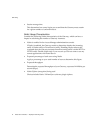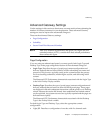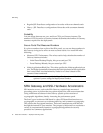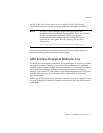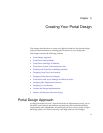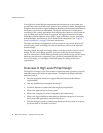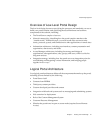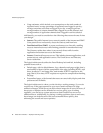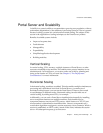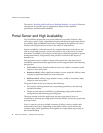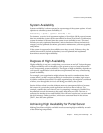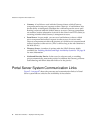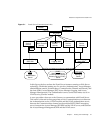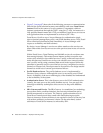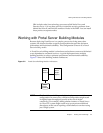Portal Design Approach
82 Portal Server 6 2005Q1 • Deployment Planning Guide
• Usage estimates, which include your assumptions on the total number of
registered users, average percentage of registered users logged in per day,
average concurrent users that are logged in per day, average login time,
average number of content channels that a logged in user has selected, and
average number of application channels that a logged in user has selected.
Additionally, you need to consider how the following three network zones fit into
your design:
• Internet. The public Internet is any network outside of the intranet and DMZ.
Users portal server and securely access the Gateway and from here.
• Demilitarized Zone (DMZ). A secure area between two firewalls, enabling
access to internal resources while limiting potential for unauthorized entry.
The Gateway resides here where it can securely direct traffic from the
application and content servers to the Internet.
• Intranet. Contains all resource servers. This includes intranet applications, web
content servers, and application servers. The Portal Server and Directory
Server reside here.
The logical architecture describes the Portal Desktop look and feel, including
potential items such as:
• Default page, with its default banner, logo, channels; total page weight, that is,
total number of bytes of all the components of the page, including HTML, style
sheet, JavaScript™, and image files; total number of HTTP requests for the
page, that is, how many HTTP requests are required to complete downloading
the page.
• Personalized pages, with channels that users can conceivably display and what
preferences are available.
The logical architecture is where you also develop a caching strategy, if your site
requires one. If the pages returned to your users contain references to large
numbers of images, Portal Server can deliver these images for all users. However, if
these types of requests can be offloaded to a reverse proxy type of caching
appliance, you can free up system resources so that Portal Server can service
additional users. Additionally, by placing a caching appliance closer to end users,
these images can be delivered to end users somewhat more quickly, thus
enhancing the overall end user experience.



